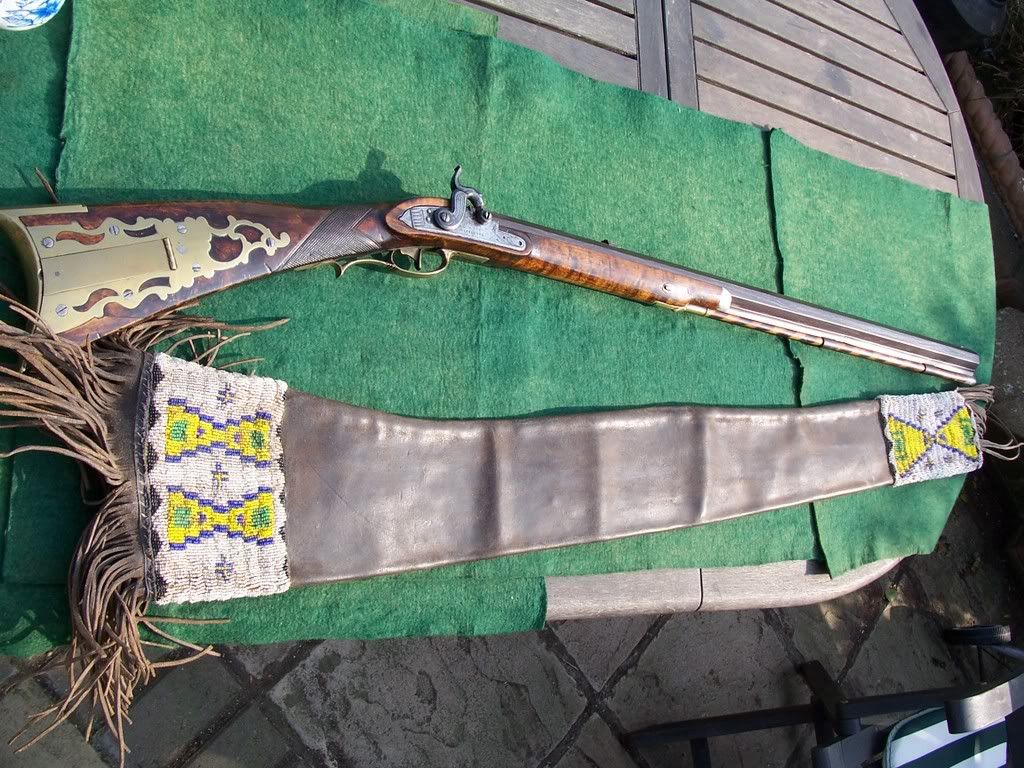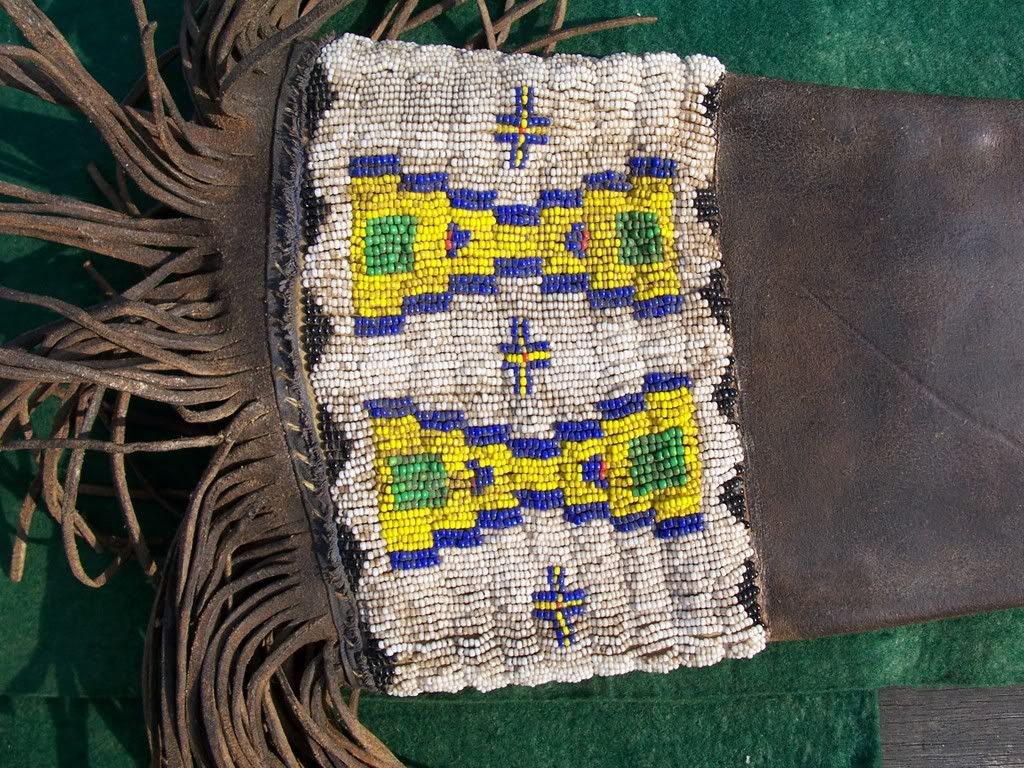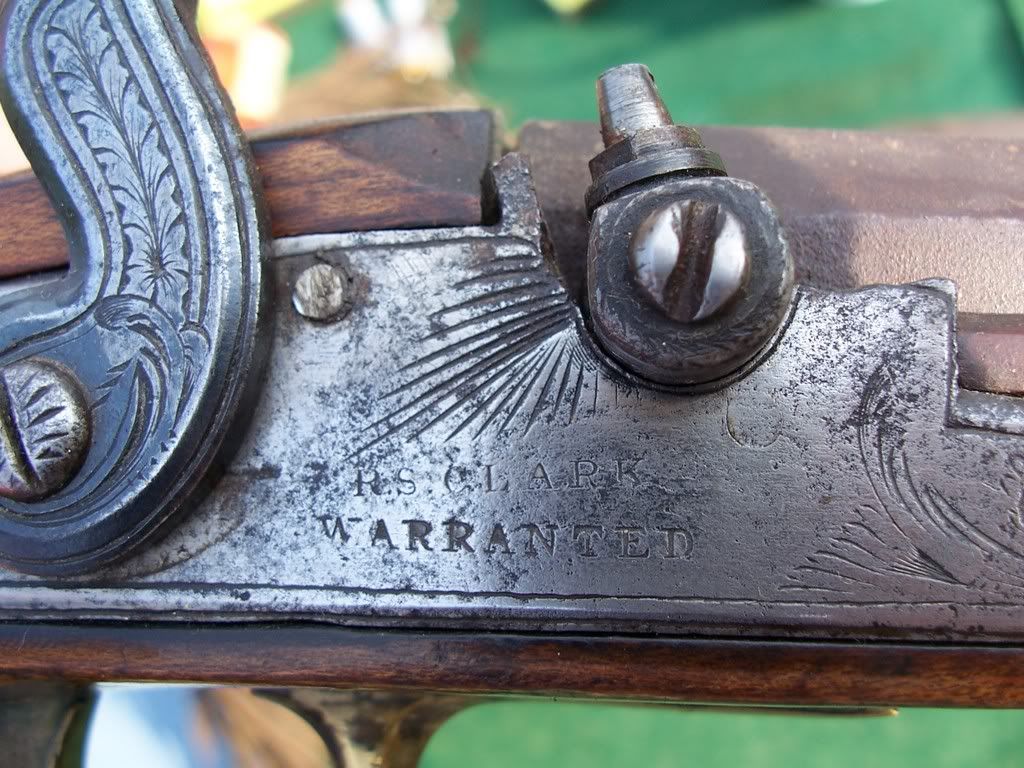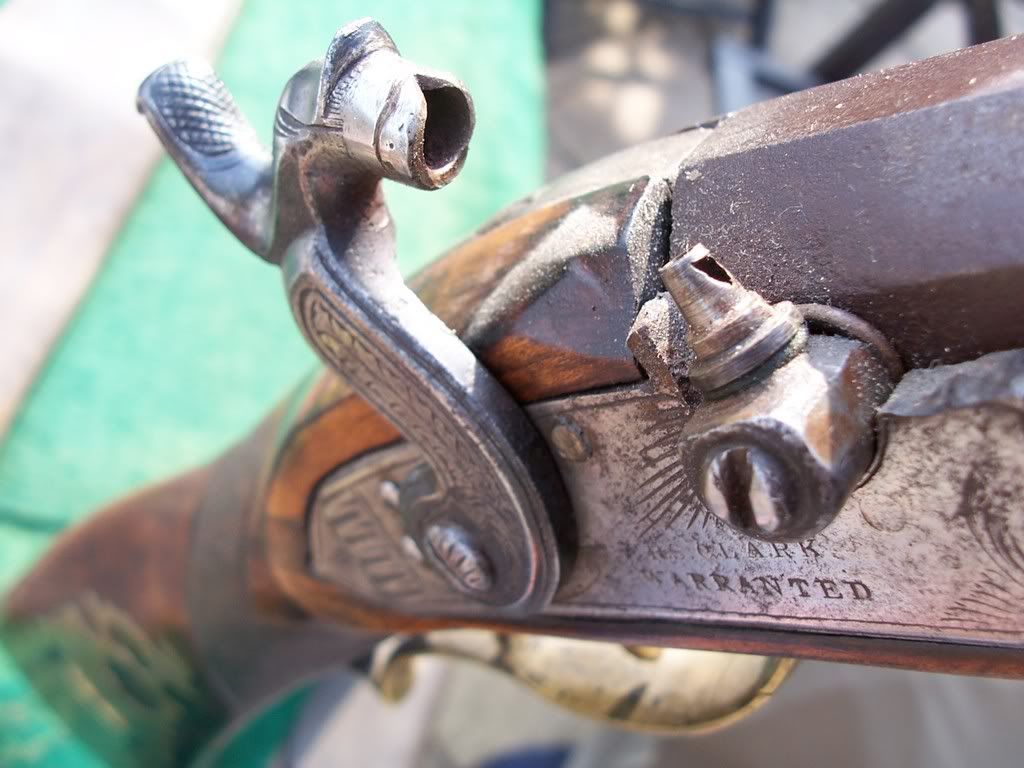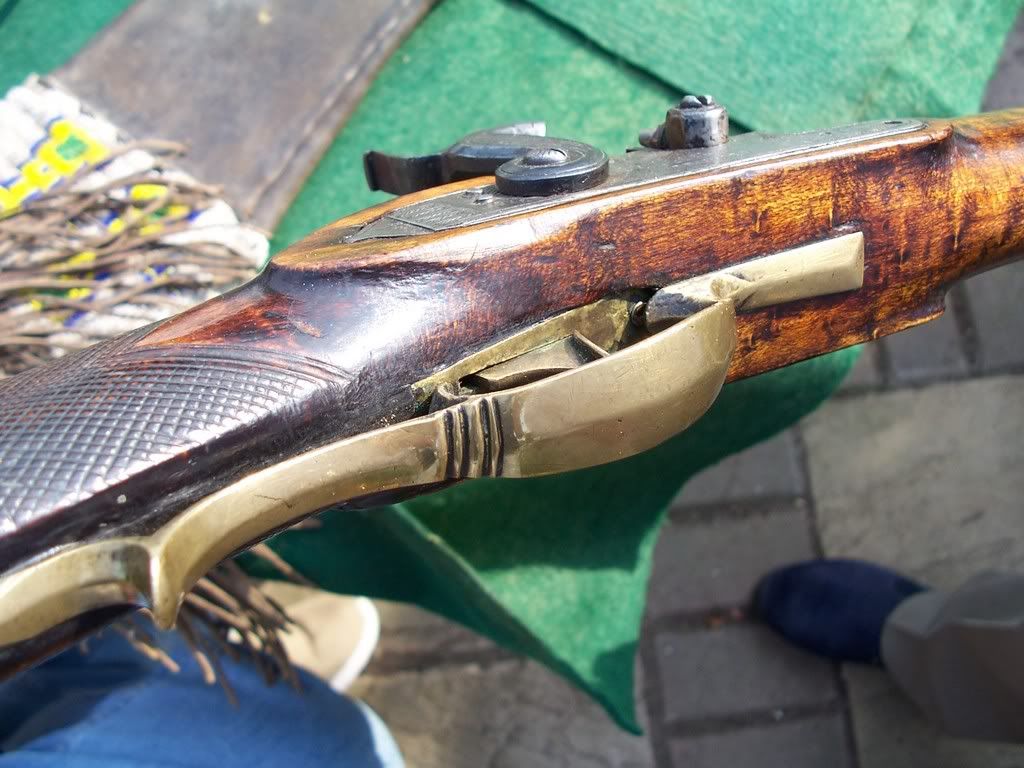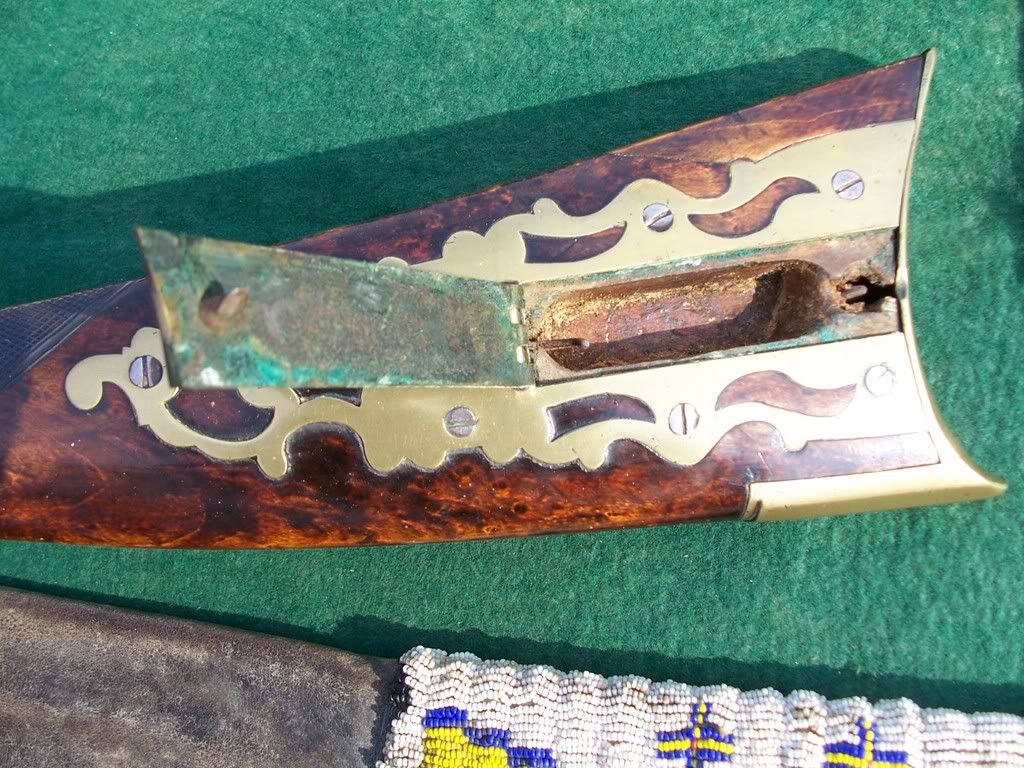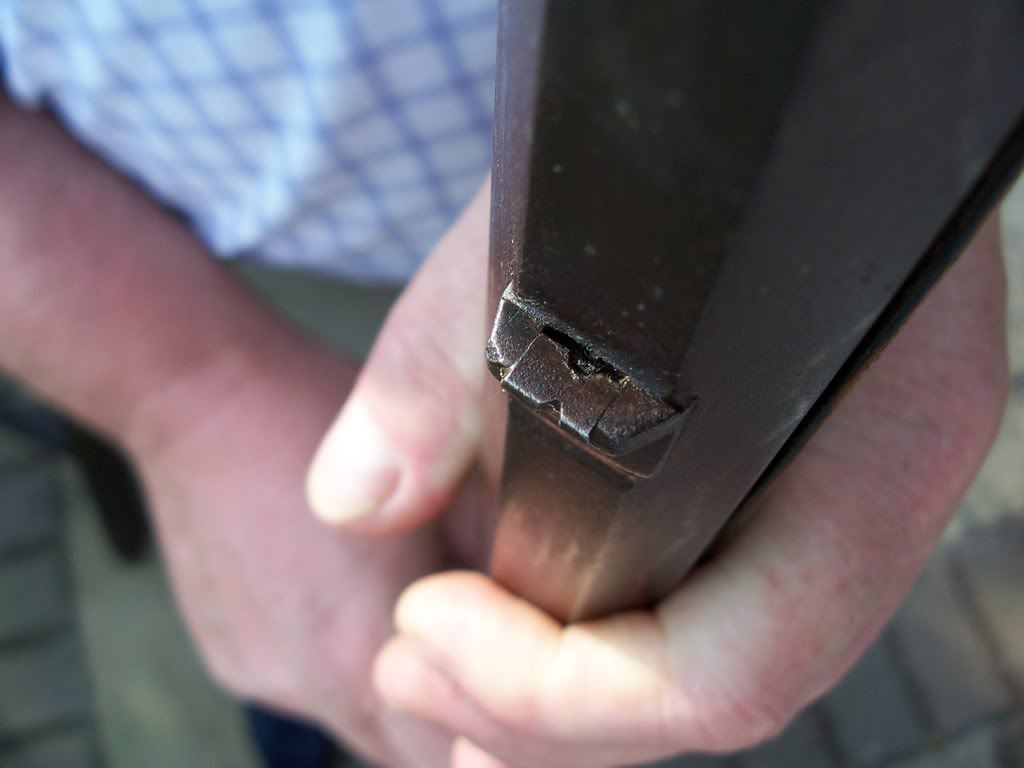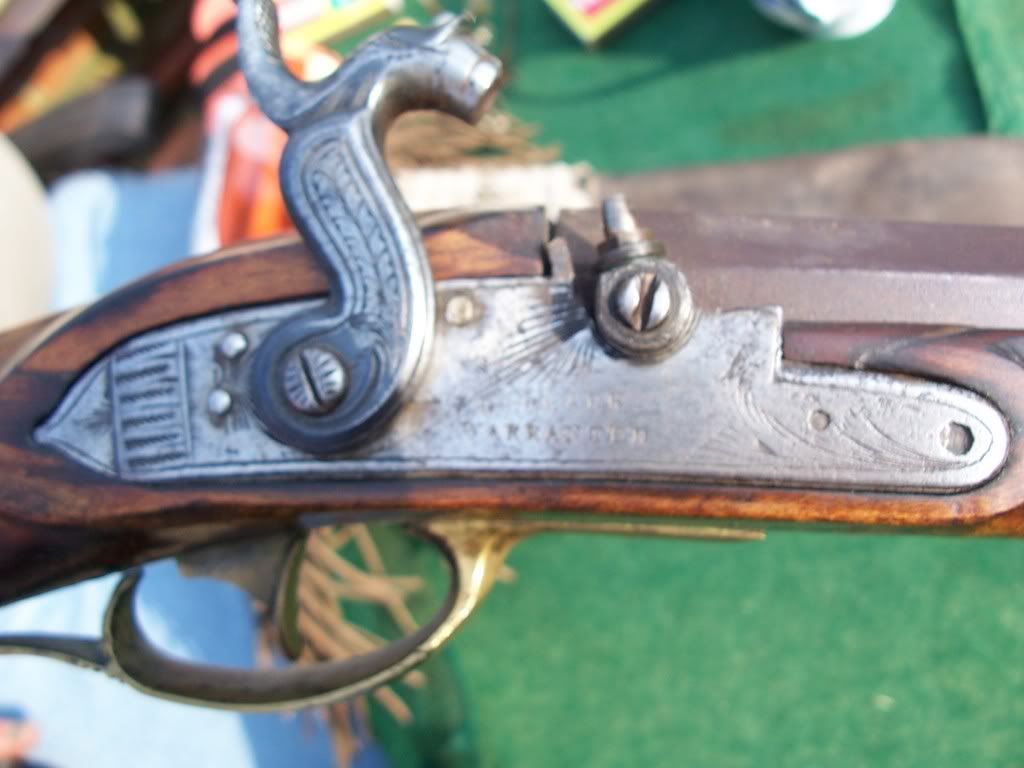There are experts on beadwork, and on the various styles and patterns associated with different tribes. Beads today come from Czechoslovakia, which has been making most the glass beads sold here in the USA for more than 100 years. So, An examination of the beads by an expert is in order. Its possible that the bead work could have been done later, as would be the same with the leather case. However, after reading your history, that seems doubtful, and it probably is the work of this Conish Tim miner's Indian wife. He most likely stayed with her until her death, before returning to Wales with the guns. Even back then, people frowned on men who had " squaws ", and mixed races. When men did that, they often stopped all contacts with their families for fear that the word would somehow get back to the family that he was living with an Indian wife. All of that seems to be consistent with what you have written about the Cornish Tim Miner, except the part about feeding the RR crews part time. Of course, he may have been involved in the construction of the Transcontinental RR in the 1860s, some thirty years after he arrived in America, and if true, than he could also have been involved in hunting game to supplement the food for the other workers. Buffalo Bill is not the only hunter that worked for Union Pacific RR supplying meat. And, he could have easily met Indians and become involved with an Indian wife during that period, as the Plains tribes were not removed until after Custer's demise at the Little Big Horn in 1876.
The pictures of the lock and side of the barrel do not easiy show where a pan was cut off-perhaps if the lockplate were removed we could see that. If that is present, then the barrel was orginally on a flintlock, and converted to use on a percussion action rifle. That was a quite common event in the 1840s, as so many people were going west, either by wagon train, or on foot. Guns were in high demand, particularly for European immigrants, who could not, and did not own firearms when they arrived. Every old gun that a gunsmith acquired was converted to a percussion action, and sold at a good profit to the new settlers heading West. In the 1830s, the ending of the Fur trade was occuring, as beaver hats went out of style. But enough had been told about the West to lure men out there to hunt buffalo, or to prospect for silver and gold. Miners could find work in the lead mines, as described near Galena, Illinois. There were also mica mines, and mines for other minerals in S. Illinois, and in Missouri. And, coal mines in Pennsylvania, and northwest Virginia.
The Sioux Indians tribes( there are and were many clans that formed what we called the " Sioux ") occupied Minnesota, Northern Iowa, and even hunted in Western Illinois, fighting with the Winnebago Tribes from Wisconsin over hunting grounds. In 1836, as the Michigan- Illinois Canal was being complete at its southern terminal near Ottawa, Illinois, there was the last Indian massacre of white settlers only about 30 mines NW of Lasalle-Peru, Illinois. That kicked off the Black Hawk War, gavie Abraham Lincoln his Military service as an officer leading a group of state militia, and resulted in a final battle at the mouth of the Wisconsin River which killed many indians, either by being shot, or by drowning. The war was over, and those Indians were re-located west of the Mississippi River to Iowa. So, in the 1830s, the Indians would not have been very far from the lead mines at Galena.
I hope this brief history about that period of time helps.
